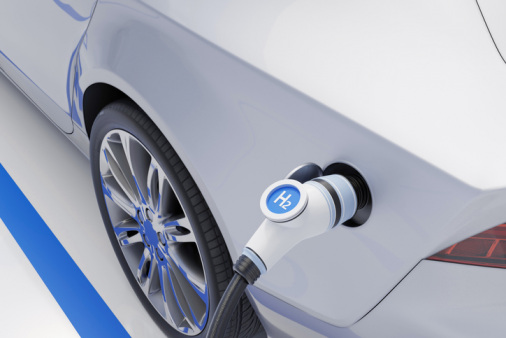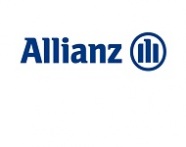Hydrogen vehicles and mobility

Authored by Allianz
Hydrogen is an important part of the UK’s plans to achieve its net zero target, with the government expecting hydrogen to make up 20-35% of the UK’s energy consumption by 2050. As well as potential applications across a wide range of industries, hydrogen powered vehicles could also become commonplace on our roads.
Hydrogen vehicles, which are also known as fuel cell and fuel cell electric vehicles, run on the electricity they generate, with water vapour the only tailpipe emission. But, while this means they could be part of the carbon reduction solution, it’s important to understand the risks and challenges they bring.
Why hydrogen?
Hydrogen is the simplest and most abundant chemical element on earth, and a versatile energy carrier that can be used across a range of sectors including refining, chemical and transport.
Although it’s in virtually every molecule of every living thing, it’s not readily available as a gas in nature so it must be produced. Modern methods of production, such as renewable or nuclear energy, or fossil fuels using carbon capture, mean it is possible to generate clean hydrogen without generating significant CO2 emissions. Hydrogen has high energy density compared to other fuel types and can be readily transported making it attractive as a fuel source.
Risk management
However, there are risks to consider and manage with hydrogen. It’s a colourless, odourless, non-toxic gas that’s also highly flammable with a rapid burning rate. Self-ignition is common due to sudden release through rupture disks and pressure relief values and, when it does burn, it releases large amounts of energy which can result in a fire or explosion.
To minimise this risk, steps must be taken to prevent escape. Sealing containers and keeping detachable connections to a minimum is prudent but it’s also sensible to ensure there are no ignition sources where hydrogen may form and to avoid electronic components in electrical installations wherever possible. Detection technology, such as optical gas imaging cameras and specialist flame detection, is also available.
Hydrogen can also cause metal embrittlement, where hydrogen atoms are absorbed into metal causing it to become brittle or crack. This could potentially affect piping, containers and machinery components. It can also damage skin, causing severe burns similar to thermal burns.
Ensuring that hydrogen is stored and transported in materials that won’t react with it will reduce the risk of metal embrittlement, while minimising exposure, and where this isn’t possible, providing protective clothing and equipment, can help to prevent skin damage.
Many of the safety steps relevant and hopefully familiar to those already working with hazardous and dangerous substances are also relevant to hydrogen, albeit there will undoubtedly be a need for information, instruction, training and upskilling and a review of competencies in many organisations, to ensure an appropriate understanding of the hazards and risks. Developing, implementing and maintaining the right control measures will only be possible if the hazards and risks are recognised and fully understood.
Poor understanding of the hazards and risks along with inadequate training and insufficient safe systems of work are likely to be amongst some of the primary factors in hydrogen related incidents.
Where training for those employed in the motor trade sector is concerned, it’s of interest to note that the Institute of the Motor Industry (IMI) has developed technician training packages. The Level 1 Award in Hydrogen Vehicle Awareness has been available for some time, and now they have recently launched both the Level 2 and 3 modules. Work is said to also be on-going with the emergency services and roadside rescue services to look at upskilling those that may attend road traffic accidents.
Legislation
It’s anticipated that the UK hydrogen market will utilise existing legislation, standards and guidance, at least initially, with no plans for additional hydrogen specific health and safety legislation thought to currently be on the horizon.
Relevant existing legislation includes:
- The Dangerous Substances and Explosive Atmospheres Regulations. The majority of employers operating in the motor trade sector should already have an understanding of the requirements of DSEAR, the nature of their existing activities in all probability resulting in activities involving the use and storage of flammable liquids, use of flammable gases (e.g. for welding) and / or overseeing deliveries of flammable liquids and gases from road tankers for example.
- The Planning (Hazardous Substances) Act and Planning (Hazardous Substances) Regulations regulate the storage of hydrogen, including a requirement for specific consent where two or more tonnes of hydrogen are stored. The extent to which filling stations will provide such capacity in the UK going forward remains something of an unknown, although some of the existing stations are understood to be in a position to make around 1.5 tonnes of hydrogen available daily. Hydrogen production hubs will of course have significantly higher capacity, and in some cases are likely to incorporate refuelling facilities that may ultimately be available for use by the general public or at least commercial users (heavy goods vehicles, buses, coaches etc.).
- The Pipeline Safety Regulations.
- The Gas Safety (Management) Regulations.
- The Carriage of Dangerous Goods and Use of Transportable Pressure Equipment Regulations.
- The Alternative Fuels Infrastructure Regulations. Amongst other things, these Regulations apply to public hydrogen road vehicle refuelling points.
- The Control of Major Accident Hazards Regulations. Hydrogen is named as a dangerous substance under these Regulations, with the threshold levels involved likely to impact some of the production hubs.
The Health and Safety at Work Act, Management of Health and Safety at Work Regulations, Construction (Design and Management) Regulations and Buildings Regulations, will of course also have relevance in some situations.
Transport demand
Providing risks are well managed, transport is set to be one of the key growth areas for hydrogen. According to the International Energy Agency’s Global Hydrogen Review 2022, although hydrogen represents only 0.003% of total transport energy, demand increased by 60% in 2020 compared with the previous year.
Road vehicles are the main source of hydrogen demand in the transport sector, with commercial vehicles overtaking buses to become the number one user of hydrogen on the world’s roads. Their potential was highlighted in the 2022 Beijing Winter Olympics, where more than 1,000 hydrogen vehicles were used including buses, cars and ski trucks.
Hydrogen-powered vehicles are becoming more common on the UK’s streets too. Transport for London introduced a fleet of hydrogen double decker buses in 2021, with many other cities running their own fleets.
Tevva launched the UK’s first hydrogen-electric HGV in 2022, with a range of up to 310 miles and a refuel time of 10 minutes and DAF is also exploring hydrogen trucks, running trials with fuel cell technology in Los Angeles.
Commercial vehicles
Hydrogen has several advantages over other zero carbon fuels for commercial vehicles. Vehicles can be topped up with hydrogen in the same way and time it would take to refuel with petrol or diesel, making a refuel quick and simple. This is much more practical for heavy commercial vehicles such as haulage trucks, farm vehicles or construction plant, where the downtime and space required to recharge a battery isn’t commercially viable.
Plenty of innovation is happening in this space to support hydrogen as a fuel. Examples include Thatcham’s Toyota Hilux hydrogen fuel cell prototype, launched in September 2023. JCB, which has developed a mobile hydrogen refuelling unit to allow easy transportation to sites where vehicles are operating, and Soguard, which can provide a haulage firm with its own hydrogen production stations to fuel its vehicles.
Alongside the ability to refuel quickly, electrification isn’t always feasible in larger vehicles. For a larger commercial vehicle such as a truck or bus, the weight of the battery required to power it is a significant barrier, making hydrogen a more viable option.
Cars and vans
In the personal lines market, there are hydrogen fuelled passenger cars available on the UK market – the Toyota Mirai saloon and the Hyundai Nexo SUV – but take-up is low.
There are several obstacles to overcome before the numbers pick up. Safety is a concern. For example, as hydrogen is a highly combustible gas, vehicles need extremely strong fuel tanks to ensure that a collision doesn’t release the gas and cause an explosion.
The technology is another stumbling block. Unlike larger commercial vehicles where the weight of the battery is an issue, this isn’t the case with a passenger car. As a result, manufacturers are pursuing battery electric vehicle technology rather than hydrogen in this market.
Lack of infrastructure is an issue too. There are just 16 refuelling stations in the UK, although this is expected to increase with Element 2 rolling out a national network of hydrogen refuelling stations across the UK and Ireland by 2027.
Servicing and repair
With numbers low, service and repair capability is limited. Outside of the manufacturers’ networks, there is little appetite to invest in specialist training to repair hydrogen cars when exposure is so low.
Even without the economic deterrent, repairing these vehicles presents several challenges from a risk perspective. The possibility of a hydrogen leak, which could potentially lead to fire and explosion, means detection technology is essential.
Additionally, as these vehicles use batteries, repair shops would also have to put the same measures in place as they do when working on electric vehicles. It may even be practical to have separate premises to work on hydrogen vehicles due to the potential risk to other vehicles.
Without the numbers, investing in the training, equipment and safety measures is a non-starter for most repair shops. Things could change though, and other countries have had more success getting hydrogen cars onto the roads. The International Energy Agency reports4 that there were 51,000 fuel cell electric vehicles by the end of 2021, up from 33,000 the previous year, with Korea, US, China and Japan leading the way.
Future adoption
While the future of hydrogen fuelled passenger vehicles is uncertain, there is far more traction in the commercial vehicles market. In this market, the size and the way these vehicles are operated makes hydrogen a viable and attractive zero carbon option.
More certainty around policy and regulation would help plus the technology is yet to be fully proven, especially at scale. These factors can deter investment so governments are looking at how they can drive innovation in these areas.
After all, while there may still be some uncertainty around hydrogen’s future adoption, it must also be noted that, as it is the cleanest fuel, there is a real incentive to make it work
About Allianz
Allianz Insurance is one of the largest general insurers in the UK and part of the Allianz Group, a leading integrated financial services provider and the largest property and casualty insurer in the world.
The mission of Allianz Insurance is to be the outstanding competitor in our chosen markets by delivering products and services that our clients recommend, being a great company to work for and achieving the best combination of profit and growth. We aim to achieve this by putting the customer at the heart of everything we do.
Allianz is able to offer customers a wide range of products and services including home and motor and commercial insurance with full range of products and service for sole traders' right up to large commercial organisations.
Allianz Insurance employs over 4,500 people across a network of 20 offices in the UK and the company’s Head Office is situated in Guildford, Surrey. Our heritage and financial strength help make Allianz what it is today; a safe and trusted partner. Over 40 FTSE100 companies partner with Allianz. youTalk-insurance sharing Allianz Insurance news and video

